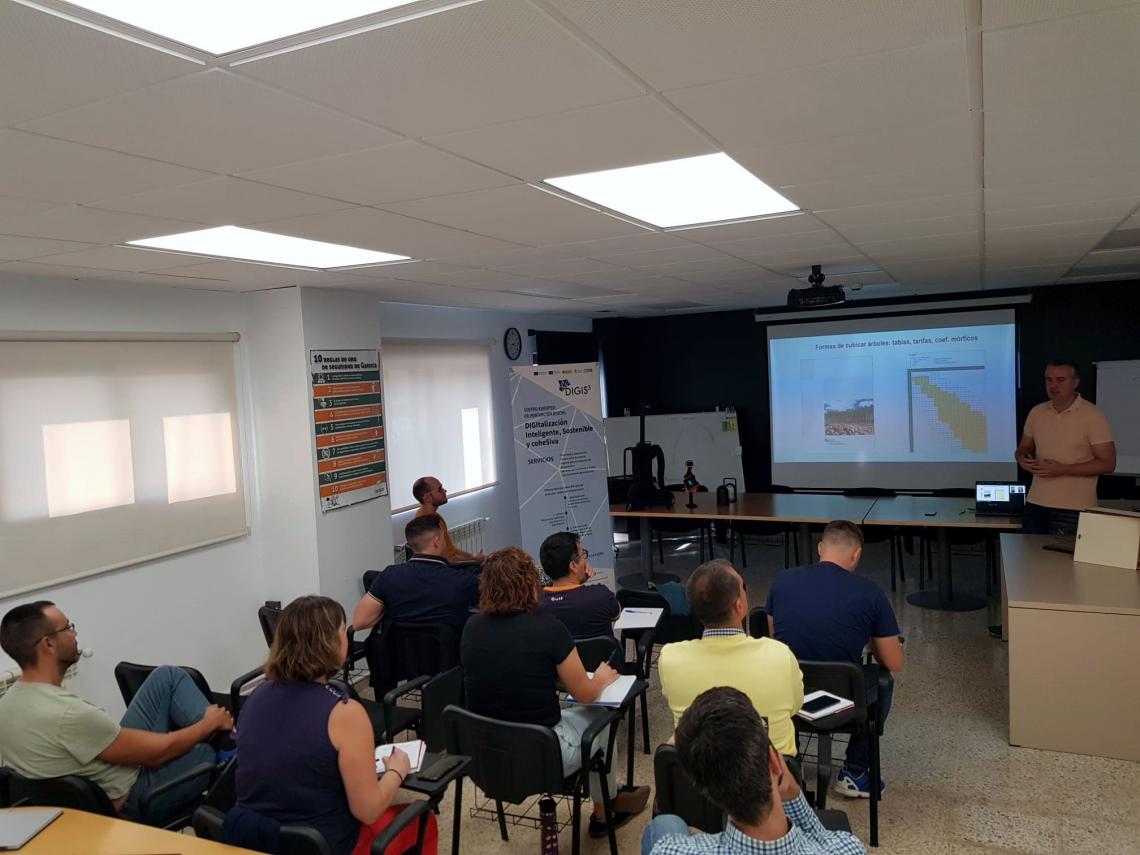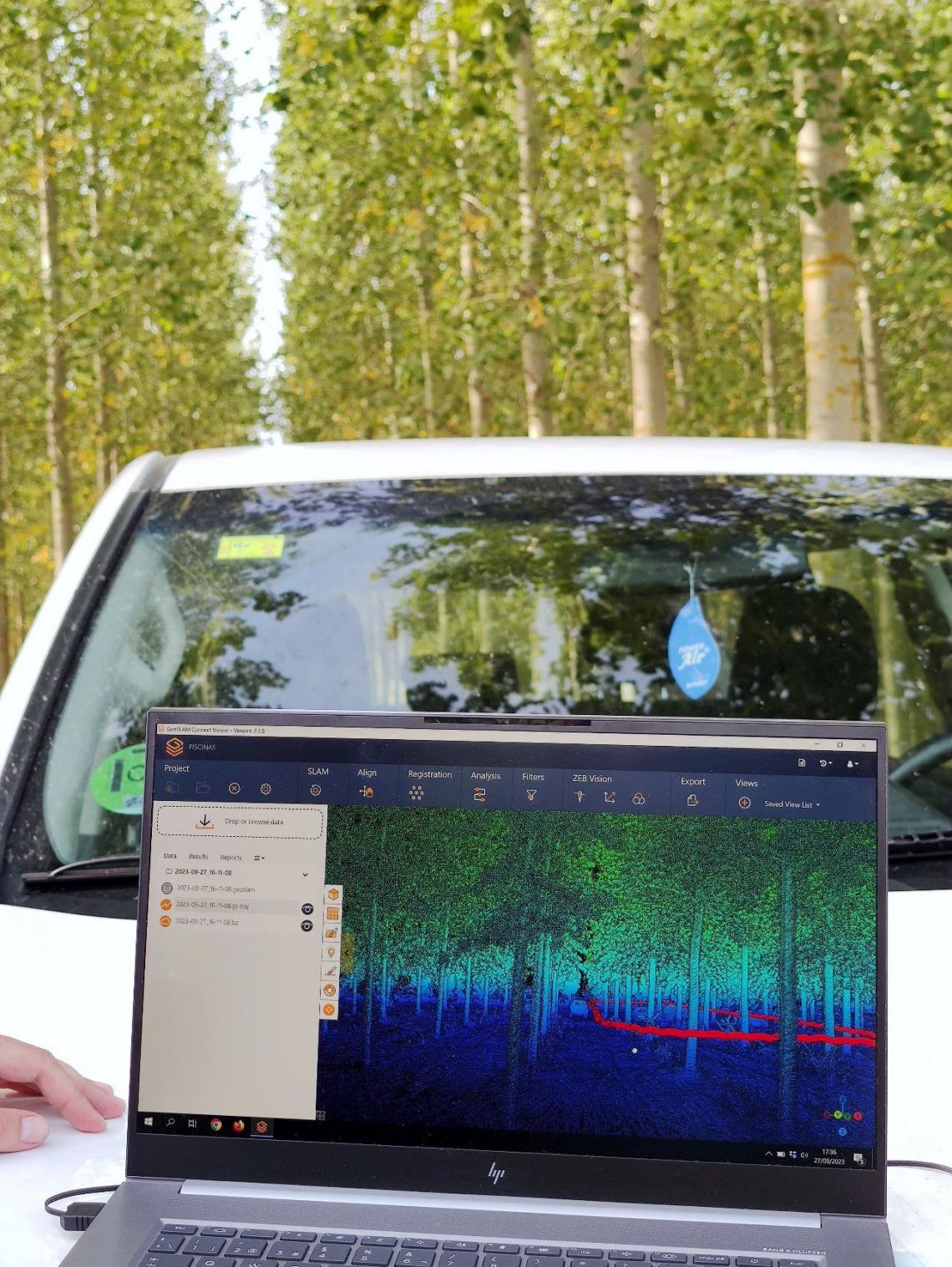The workshop, held this week at the Garnica company in the framework of the European Digital Innovation Hub DIGIS3, focused on the technologies available for the quantification of the forestry sector and its transformation.
The DRACONES Research Groups at the Ponferrada Campus of the University of León (ULE) has organized this week a workshop on 'Populus3D: Advanced workshop on the technologies available for the quantification and estimation of resources in the forestry sector, as well as its transformation', within DIGIS3, the sole European Digital Innovation Hub (EDIH) of Castilla y León. Staff from the forestry and management department of the plywood manufacturing company, Garnica, took part in this training at the Valencia de Don Juan facilities.
It should be remembered that this European Centre is made up of six entities of Castilla y León: ULE, IoT-DIH (Air Institute), DIHBU, DIH-LEAF, SCAYLE and the Institute of Business of Competitiviness of Castilla y León (ICE), and its main objective is to promote the Intelligent and Sustainable Digital Transformation of SMEs and public administrations of the community in the next three years.

The workshop included a presentation by researcher Fernando Castedo on how to obtain profile functions to estimate timber volumes in standing trees and a demonstration of how to use the Chopo4D application, which will also allow to estimate the timber stock in a plantation in the near future.
Pablo Rodríguez then analysed the different laser technologies for quantifying the amount of wood in the field, analysing the potential and limitations of terrestrial scanners and handheld or portable mobile scanners. To conclude the training, Rodrigo Arévalo and Flor Álvarez presented the results of two practical cases of inventory and cubing of poplar groves with mobile laser scanners, with emphasis on their applicability and recommendations for use.

The training also included a practical session in the field, with data collection using a portable laser scanner in a poplar plantation, which captures more than 300,000 points and allows detailed 3D reconstruction of each of the trees, creating a digital twin of the poplar plantation in which the total wood volume of each tree, its height, diameter, or the volume of timber can be calculated with precision, so that logs with characteristics defined by the industry can be obtained.

From this information, it is possible to know the amount of wood to be obtained and how to make the optimal cutting for its use (before cutting it and taking it to the factory), thus optimising the industrial processes and ensuring maximum wood yield.
The digitalisation of these processes in the forestry sector is key to improving work and production lines, as well as to achieve a more efficient and sustainable management, benefiting both the industry and the environment, thanks to a more accurate knowledge of the current and expected stock.
(Photographs from this week’s workshop and field sessions at the Garnica company facilities).